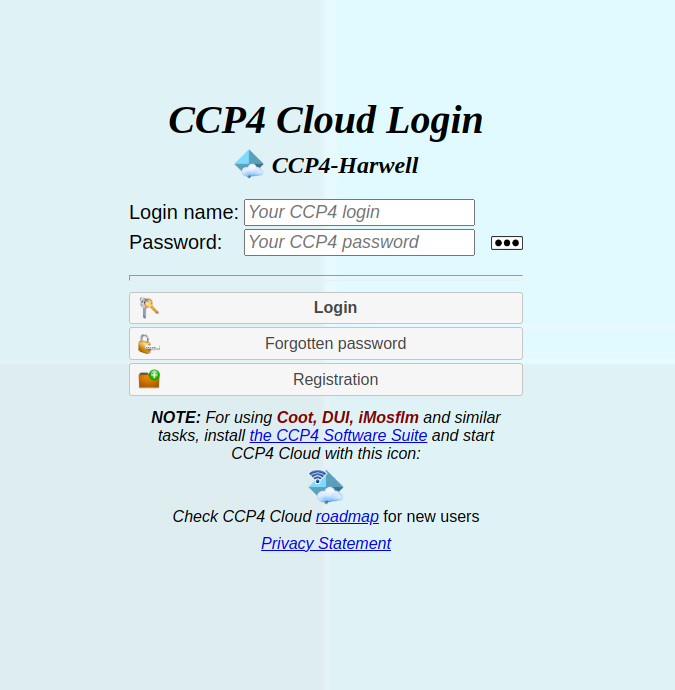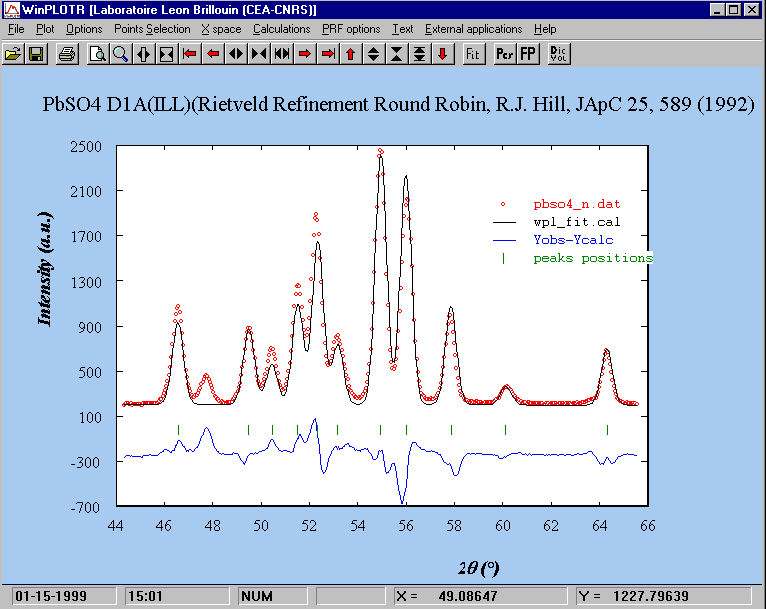

Struktura 2023 - Kursy (Courses)
CCP4 - Fullprof - FOX
CCP4
Contact for questions: Petr Kolenko (kolenpe1 et cvut.cz)
Practical part of the course will be run on participants' own computers. CCP4Cloud is basically independent on the platform - Win, Linux, Mac. There will be at least two computers there for reserve. We strongly recommend the installation of the most recent CCP4 because in the tutorials also example of collaboration and sharing of projects between own installation and cloud solution.


Fullprof

Contact for questions: Stanislav Daniš (danis et mag.mff.cuni.cz)
Assistants: Radovan Černý, Přemysl Beran
Suggested topics (only some will be selected)
FOX
Contact for
questions: Radovan Černý (Radovan.Cerny et unige.ch)
Assistant: Jan Rohlíček
FOX (Free Objects for Xtallography)
FOX (Free Objects for Xtallography) is a free, open-source program for windows and Linux written for ab-initio structure determination from powder diffraction (SDPD). It performs direct-space structure determination using the reversed Monte Carlo algorithm of global optimization, allowing a modular description of the structure as a combination of atoms, polyhedra and molecules. Since the first release of FOX in 2001 [1], many features have been added in order to enhance all steps required for a successful SDPD, along with various useful tools to explore crystal structures and powder diffraction patterns [2-7].

Figure 1. FOX 2017.2 indexing and profile fitting interface. Top left: profile fitting widget, allowing to select groups of parameters to optimize using Le Bail and full-profile least squares. Bottom left: result of the space group explorer, where all space groups compatible with the unit cell are tested and listed with increasing Goodness-of-Fit. The correct choice in this case is the first one, with the highest number of systematic extinctions. Top right: zoomed portion of the observed and calculated powder pattern in profile fitting (Le Bail) mode, with the list of peaks found and predicted indexing. Bottom right: results from a ‘quick’ indexing, with solutions listed by decreasing M20 score.

Figure 2. Main FOX interface. Left: main window with the beginning of the description of a crystal structure. Top right: 3D view of the structure, with the help text, showing only the asymmetric unit. Several shortcuts are available to easily toggle between different views (full unit cell, toggle hydrogens, fade atoms outside display volume…). Bottom right: result of querying the Crystallography Open Database [8], after searching for structures with elements C, N, O, F, Fe and 6 different elements. A simple double-click allows to load the CIF in FOX, where the molecules are automatically built by analysing the atomic distances.
1. Favre-Nicolin, V.; Černý, R. FOX, “Free Objects for Crystallography”: A modular approach to ab-initio structure determination from powder diffraction. J. Appl. Cryst. 2002, 35, 734–743.
2. Favre-Nicolin, V.; Černý, R. A better FOX: Using flexible modelling and maximum likelihood to improve direct-space ab initio structure determination from powder diffraction. Z. Kristallogr. 2004, 219, 847–856.
3. Update on ab-Initio Structure Determination Using FOX. Available online: http://www.iucr.org/__data/assets/pdf_file/0014/21623/cpd31.pdf
4. Černý, R.; Favre-Nicolin, V. FOX: A friendly tool to solve nonmolecular structures from powder diffraction. Powder Diffr. 2005, 20, 359–365.
5. FOX, Free Objects for Xtallography Version 1.7 (November 2005). Available online: http://www.iucr.org/__data/assets/pdf_file/0003/21657/CPD32.pdf
6. Černý, R.; Favre-Nicolin, V.; Rohlícek, J.; Hušák, M.; Matej, Z.; Kužel, R. Expanding FOX: Auto-indexing, grid computing, profile fitting. Comm. Powder Diffr. (IUCr) Newsl. 2007, 35, 16–19.
7. Černý, R.; Favre-Nicolin, V.; Rohlícek, J.; Hušák FOX, Current State and Possibilities. Crystals 2017, 7, 322–331.
8. Gražulis, S.; Chateigner, D.; Downs, R.T.; Yokochi, A.F.T.; Quirós, M.; Lutterotti, L.; Manakova, E.; Butkus, J.; Moeck, P.; Le Bail, A. Crystallography Open Database—An open-access collection of crystal structures. J. Appl. Cryst. 2009, 42, 726–729.